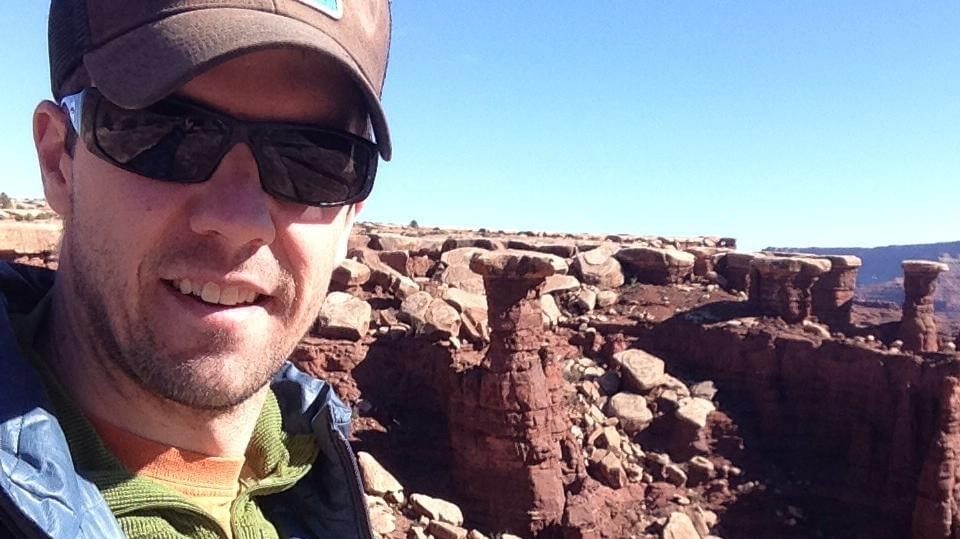Some information may be outdated.
Science Moab recently spoke with Nikki Cooley, the interim assistant director for the Tribes and Climate Change Program at the Institute for Tribal Environmental Professionals. Cooley, who currently lives in Flagstaff, Arizona, studied forestry and received her masters degree from Northern Arizona University. She says the role at the ITEP is her dream job where she can combine all of her interests and passions, and feel like she’s making a difference. We talked about how tribal communities are working on their own terms and with their own knowledge system to address climate change.
Science Moab
Having grown up on the Navajo Nation, what kind of impacts of climate change have you seen?
Cooley
My grandfather would tell me water is the new gold and that someday I would have to fight on behalf of the earth alongside a lot of other people who were and are going to be doing the same thing. Being intimate with the environment that I grew up in, I was very conscious of what was available. So, for example, when herding sheep and goats, we wouldn’t overgraze. We would find new pastures for them to feed and water. There was always water available. I could name water sources and I would direct them there. As I grew into my high school years, I found that the water holes were decreasing. Now they’re nonexistent. In addition, some of our wells are drying up or the waters are contaminated. So yes, as a 41-year-old Navajo woman, I noticed drastic differences. And we’ve been calling it climate change for a long time in our own language.
Science Moab
What work are you doing for the Institute for Tribal Environmental Professionals in terms of climate change adaptation?
Cooley
I bring tools and services to tribes to promote and encourage climate change adaptation, and now mitigation planning. We provide training on climate change and adaptation planning. Tribes know what climate change is, but to communicate it in their own language in their own way of doing is really important. There’s a lot of young people and many older people who don’t understand how to translate the Western idea of what climate change adaptation planning is. To bring those two knowledge bases together is one of our specialties.
Science Moab
In terms of the Navajo Nation adaptation plan, can you give some examples of what that really looks like?
Cooley
Basically, an adaptation plan goes through five steps. The first one is really to scope out who’s going to be involved in the planning, meaning, what kind of topics on tribal lands are priority. So for example, the Navajo Nation, a few of their priority topics are water, feral horses, and lack of communication. They decided that those three topics were to be a priority to be addressed for the whole nation. So, after getting funding, community support, leadership approval, and also the power to push those actions through, part of the plan is also to monitor how it’s going like a research project.
Science Moab
There’s incredible traditional knowledge held within all of these tribal communities. Can you talk more about traditional knowledge and its role in climate change mitigation and adaptation?
Cooley
I’m a scientist on the Western side with my degrees but also growing up I did my own monitoring, I did my own data, gathering my own observations. It’s important to understand that Native people have the knowledge, they know what science is, it’s just communicated in a different way than the Western, non-Indigenous, non-tribal way of doing science. It’s important to distinguish the two because they come from two very different foundations. For example, growing up in forestry school, we revere Aldo Leopold, Gifford Pinchot, James Mooney…all these folks that are white men. We didn’t talk too much about the significance of the efforts of Native Americans, the tribal people who were already here on this continent, and were already taking care and managing the environment. We suppress those efforts and we’re facing those consequences right now.
Tribal people were telling BIA, US Forest Service, that we should be burning every year as we’ve been doing for hundreds and hundreds of years. Traditional knowledge really refers to how the native or tribal intergenerational teachings have been handed down for millennia. It describes a relationship that is reciprocal, rather than one being superior over the other. We really promote and encourage them to write these climate change adaptation plans in their own tribal language and to include traditional knowledge. So part of my job is to encourage people, tribal nations who are working with universities, or any academic institution, [organizations or] consultants, to really say that traditional knowledge has to be incorporated. Because it’s who we are. It is the identity of our people. And without it, it’s just another research paper.
Appreciate the coverage? Help keep local news alive.
Chip in to support the Moab Sun News.





